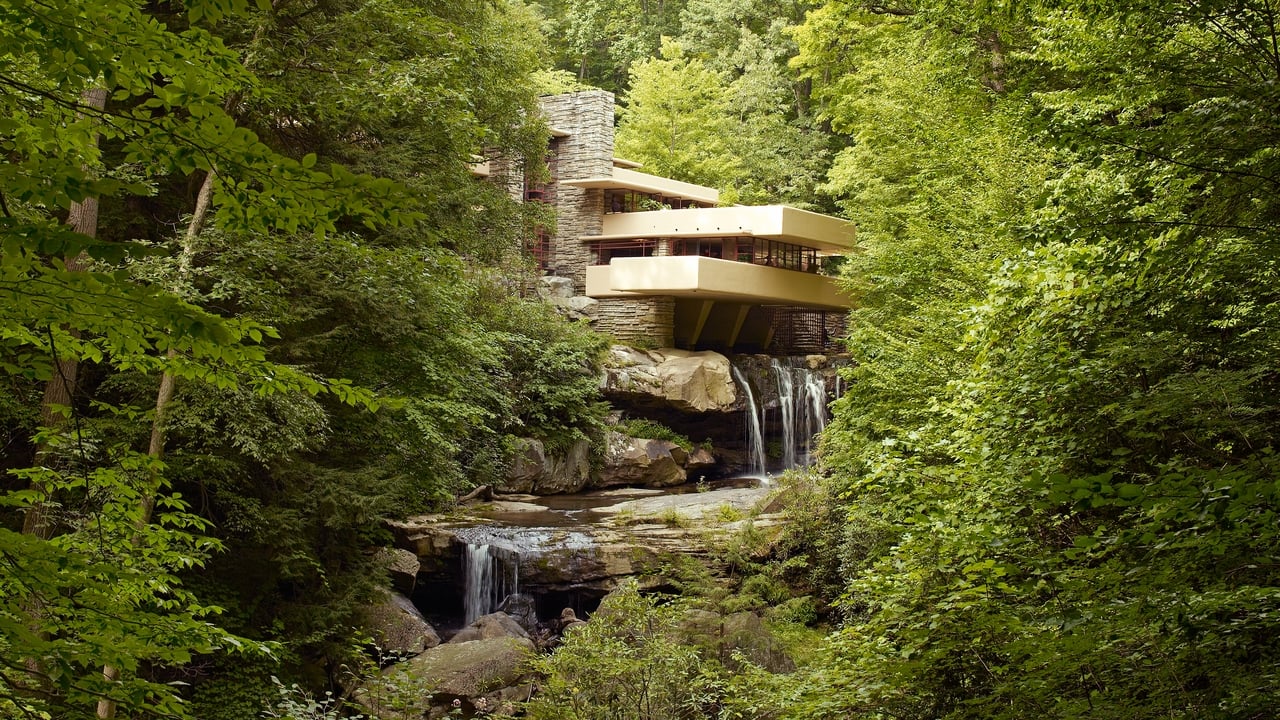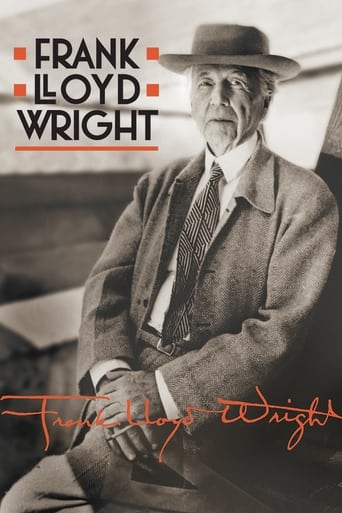

And, when speaking about America's most-beloved/most-hated architects of them all - Does one properly refer to this man as being Mr. Frank Lloyd Wright, or should he really be called Mr. Frank Lloyd Wrong? Needless to say - There can be no doubt that Frank Lloyd Wright (who was/is probably the most celebrated and misjudged architects ever) was destined to redesign the entire world, but, for some unforeseen reasons, this towering vision of his was simply never realized.Born in Wisconsin in 1867 - I think it's really very surprising to note that Wright's most productive years in his field of work didn't come around until he had reached the age of 80 (!!).Throughout his 70-year career as one very ambitious, strong-willed and arrogant architect, Wright not only designed private homes and office towers, but he's also credited with the design of churches, schools, hotels and, yes, even gas stations and furniture, as well.Even though this 2.5-hour documentary (directed by Ken Burns) had its fair share of notable merits and strengths to its advantage, it also racked up a few demerit points for itself by (for one thing) placing way too much emphasis on Wright's very turbulent personal life.In 1959, Frank Lloyd Wright died at the age of 91.
... View MoreI don't think I like Ken Burns very much. We are at cross purposes. He comes to give me a good story, tight with no lapses, that moves smoothly without holes. What I come for is insight, the holes, the spaces, the sight you get from emptiness. I cannot imagine a less suitable topic for the Burns approach than this particular mind.He wants to tell the story of a genius, and like so many storytellers he constructs the man and assumes that as we know him, we will know his works, which are assumed to flow from his makeup. So we get a linear history: birth, life (a long one), death. Events happen and along the way out pops a building which we take the time to briefly visit. The passion of the man and indeed the transcendence of some of the spaces are conveyed not through firsthand cinematic experience, but through the passionate reporting of experts. I must admit their passion is contagious and they held my interest. But there was no experience with the space. Apart from grand notions of unitarian communion with nature, no spatial ideas. We have a truly unfortunate decision, that architecture in the first moments is made analogous to music, the constructions being the same. Then when a spatial experience is expected, we get swelling of this and that classical piece; Beethovan caps it as we tour the Guggenheim. The documentary moves at the now standard TeeVee pace with no long form building because of those commercials (yes, in public broadcasting). While it flows, the whole world of Wright is about stillness, holding, breath not yet breathed. His spaces do not flow, like say his contemporaries Horta or the best of Gaudi. They are of the landscape, inspired by Japanese Buddhist ideas of still containment. The form of the film fights the architecture and the ideas behind it.I advise you not to see this because it will mess you up. Until he was 63, Wright was an essayist, not a novelist. He made buildings as statements, not as working whole environments. They were not designed to work, but rather to give the impression that they could. This makes them important of course, but you need to appreciate that the best architecture is not the one with signs, and probably not the one that seems easy to read. It surely is not the one that bends people to the space rather than the other way around.It is good to know about his history, the family, the Ouspensky-inspired apprentice program and the obsession with Japan. It is good to know that he was a passionate man, sexually attuned and spiritually bound to his women. But the impression we get is that he was a ball of creative fire, throwing grand designs off casually. That was the myth he invented. In fact he was an ordinary architect and a second-rate celebrity until 63 and he knew it. He was promoting a talent larger than what he had or could be. At 63 — exactly like Kurosawa — his inner demons drove him nearly to suicide. Kurosawa tried.At that point, considered obsolete he reinvented himself into a man of true vision. It would have been good to have been told that this came from constant fawning attention from the curated apprentices his wife surrounded him with. And that he had a sensual-spiritual- sexual awakening at that age. Everything after that was about the form. He would lack subtlety until he died, but he could conceive the form whole first and then explain it to the paper, carrying the scrolls like scripture.That crisis that changed him among the many crises he had. That dry period where he knew he would die having never mattered no matter how much bluster was expended. That's what we needed to know.And doggone, Burns needs to allow that great architecture is a matter of having the great ideas first. We invent a history afterward to explain why we like what we have been convinced to like. There is an intrinsic beauty to great architecture, but it is because the talent of the artist is in how he sells it to our souls, and not what he sells so much. Burns has let us down.But I am glad he did not kill himself, and Kurosawa as well. Because after 63, they helped invent me.Ted's Evaluation -- 2 of 3: Has some interesting elements.
... View MoreThis documentary is useful to neophytes, and it will get you up to speed on the general shape of Wright's episodic life, career and accomplishments. Its on-screen experts are on the silly side. Meryl Secrest strays into self-parody as she delivers her glib stories with an over the top poseur accent originating from parts unknown. Bruce Brooks Pfeiffer looks like a pale, red-eyed cadaver. Brendan Gill overstates half his anecdotes until any reasonable person begins rolling their eyes. As with any career this long, many Wright stories are truncated or left out. The speedy failure of Midway Gardens (via bad financing) is pushed off screen by the tragedy at Taliesin. A suitable coda for this production would have been to flash the images of all the architects Wright influenced or trained directly (Bart Prince, Bruce Goff, Schindler, Neutra, John Lautner, Paolo Soleri, too many too name...).Ken Russell "civil-wars" another topic. And the treatment is now a tepid, dull, formulaic, outdated way to encounter any material.
... View MoreFrank Lloyd Wright is the most innovative and influential architect in the 20th century. He shaped the way we think about buildings today, and put architecture at a different level of thinking. Buildings look simple in design but modern in method of the art of architecture. Even if you are an architect or not, you will enjoy this documentary.
... View More